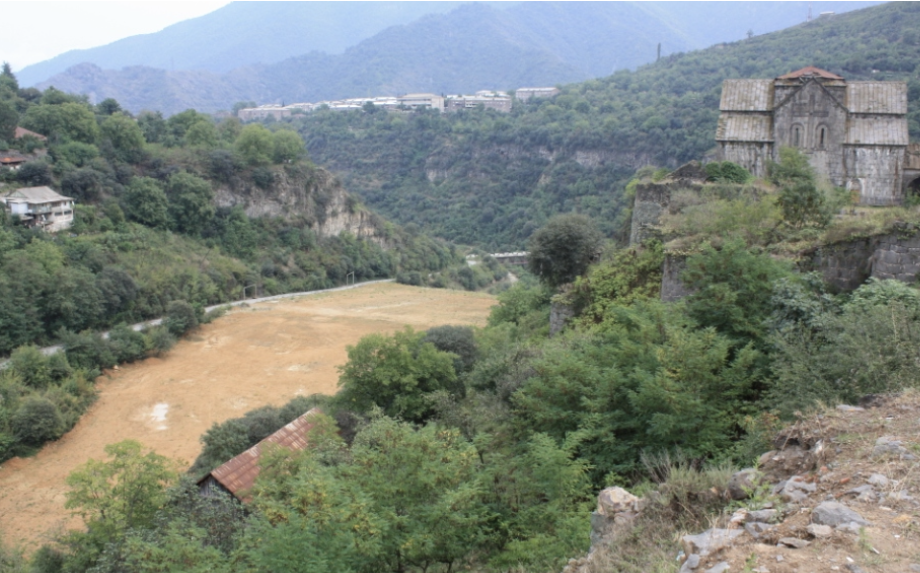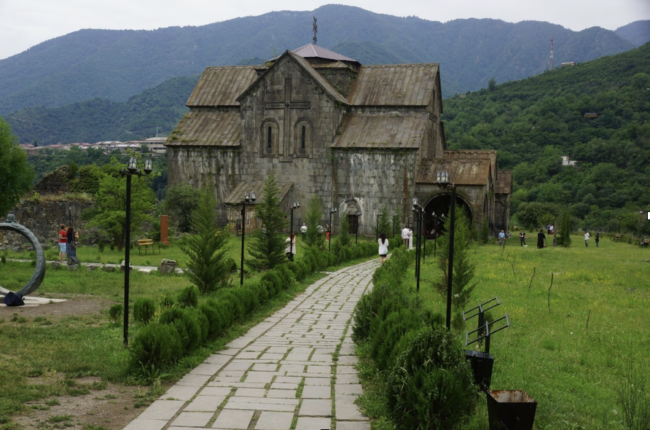Lead Health Risk Mitigation in Akhtala, Armenia
Number of residents/children at risk: 2100 residents, about 400 children
Source of pollution/contaminants: mine and ore refining factory, Pb, As, Cd
Project implementer: EHPMI
Total cost: $300,000
Project term: 2 yearsNumber of residents/children at risk: 2100 residents, about 400 childrenSource of pollution/contaminants: mine and ore refining factory, Pb, As, CdProject implementer: EHPMITotal cost: $300,000
Akhtala is a town in the northern Lori province of Armenia with populations of 2400. It is located along the Shamlugh river, on the slopes of Lalvar mountain, at a distance of 186 km north of the capital Yerevan.
Akhtala has a Soviet-era underground mine and an open pit barite-poly-metallic mine (Bekchyan, 2013; Zoï Environment Network, 2012). It also has a processing factory – “Akhtala Mountain Enrichment Combinat,” which processes the copper ore extracted from Akhtala and Shamlugh, a nearby town (Bekchyan, 2013; USAID, 2014). Mining has been taking place in Akhtala for approximately 250 years. The mine ceased operations in 1990s with the economic collapse after the fall of the Soviet Union. In 2001, Akhtala’s mine was privatized and restarted operations. Currently the annual production of the mine in Akhtala is 12,000 tons (USAID, 2014). It is estimated that with the current exploitation rate the mine will have a lifetime of 25 years.

The mine has three tailing ponds (Zoï Environment Network, Environment and Security Initiative, 2012). The first called “Nazik” is non-operational and located below the church, in the center of town (RA Lori Marz Rescue Department of the Ministry of Emergency Situations, 2014). The main operating “Nahatak” tailing pond is located 8 kilometers from Akhtala. The third tailing pond “Paytutsik Nyuteri Dzor” is located 2 kilometers outside of Akhtala (RA Lori Marz Rescue Department of the Ministry of Emergency Situations, 2014).
There have been several attempts to assess the environmental and public health risks stemming from mining in Akhtala. In a study conducted in 2001, Petrosyan and colleagues revealed that 11% of soil samples taken from the yards of residential areas and 17% of loose soil samples taken from the front of the residential buildings exceeded the Maximum Allowable Concentration (MAC) for lead (400 ppm) (Petrosyan et al., 2004).
A thorough risk assessment field work in Akhtala community was conducted by American University of Armenia (AUA) with support of Blacksmith Institute in October 2013. The town was divided into four sectors with the churchyard being considered a separate testing area. The investigators collected 202 soil samples across town. Lead in 26.7% of all soil samples (54/202) exceeded the USEPA soil screening level (SSL -400 mg/kg). Arsenic exceeded the maximum allowable concentration (MAC) in more than 93% of samples in all four districts (Akopyan et al, 2014).
Following the environmental risks assessments, another study was conducted to assess the levels of lead in blood samples taken from children 4 to 6 years of age from three communities of Armenia: Akhtala, Alaverdi, and Erebuni district of Yerevan (Petrosyan et al., 2014). Overall 162 children were tested by a LeadCare II Analyzer – 39 from Akhtala, 69 from Alaverdi and 54 from Yerevan Erebuni district. In Akhtala 84.6% of children exceeded the CDC-recommended reference level of 5 mcg/dl with a geometric mean of 6.8 mcg/dl.
In 2016-2018 Blacksmith Institute Armenia and All Armenian Fund implemented a remediation project in the churchyard of Akhtala, but the problem of contamination of residential area remained unsolved.
Proposed Solutions/ Project Objectives:
1. Conduct Detailed Site Assessment (DSA) to map the contamination of the area and identify hotspots to clean up.
2. Clean up identified most contaminated areas in Akhtala.
2. Conduct medical monitoring of children in Akhtala before and after the cleanup project.
3. Raise awareness of children and parents about lead health risks and mitigation actions. Train local medical personnel and teachers.

